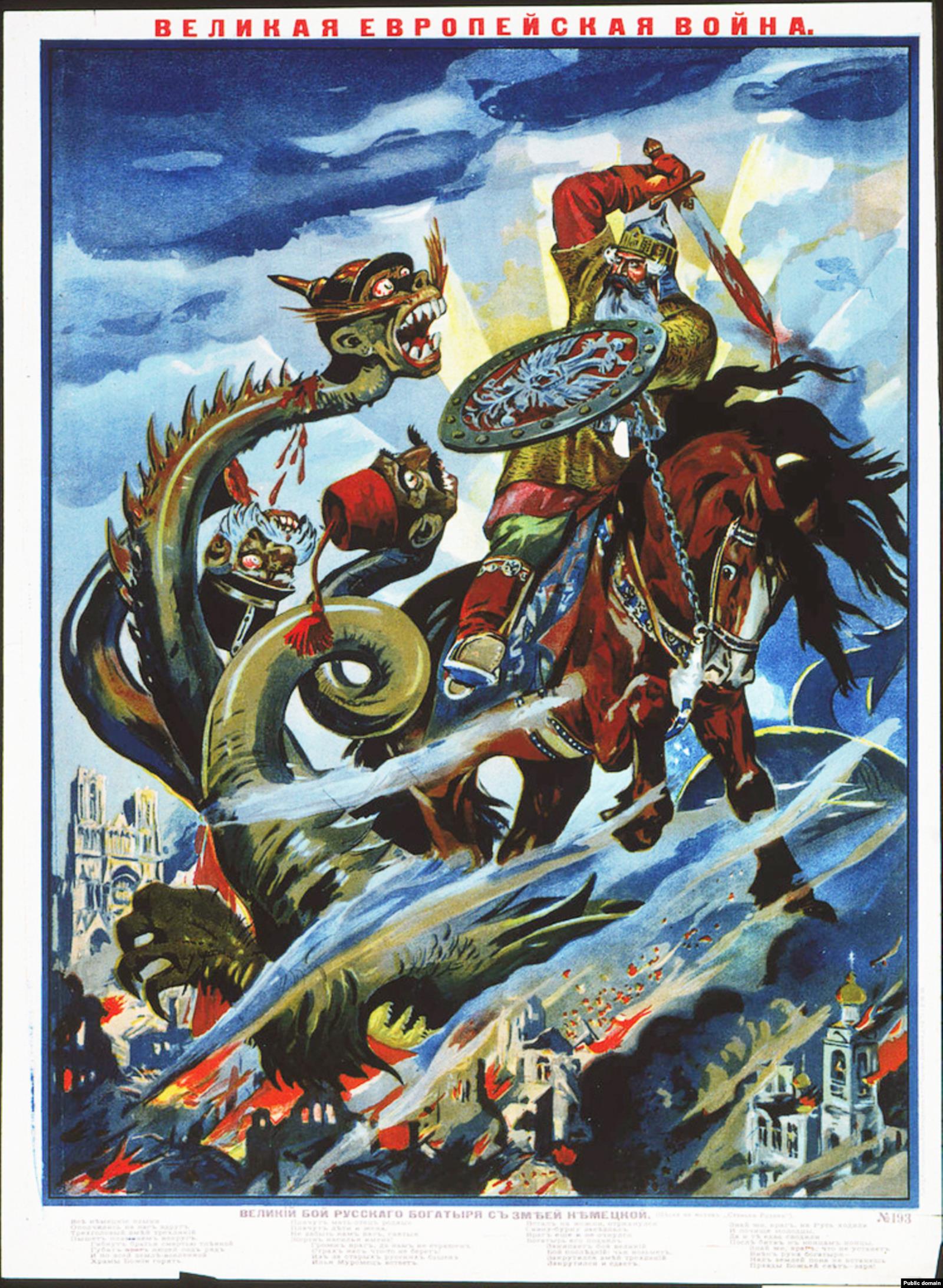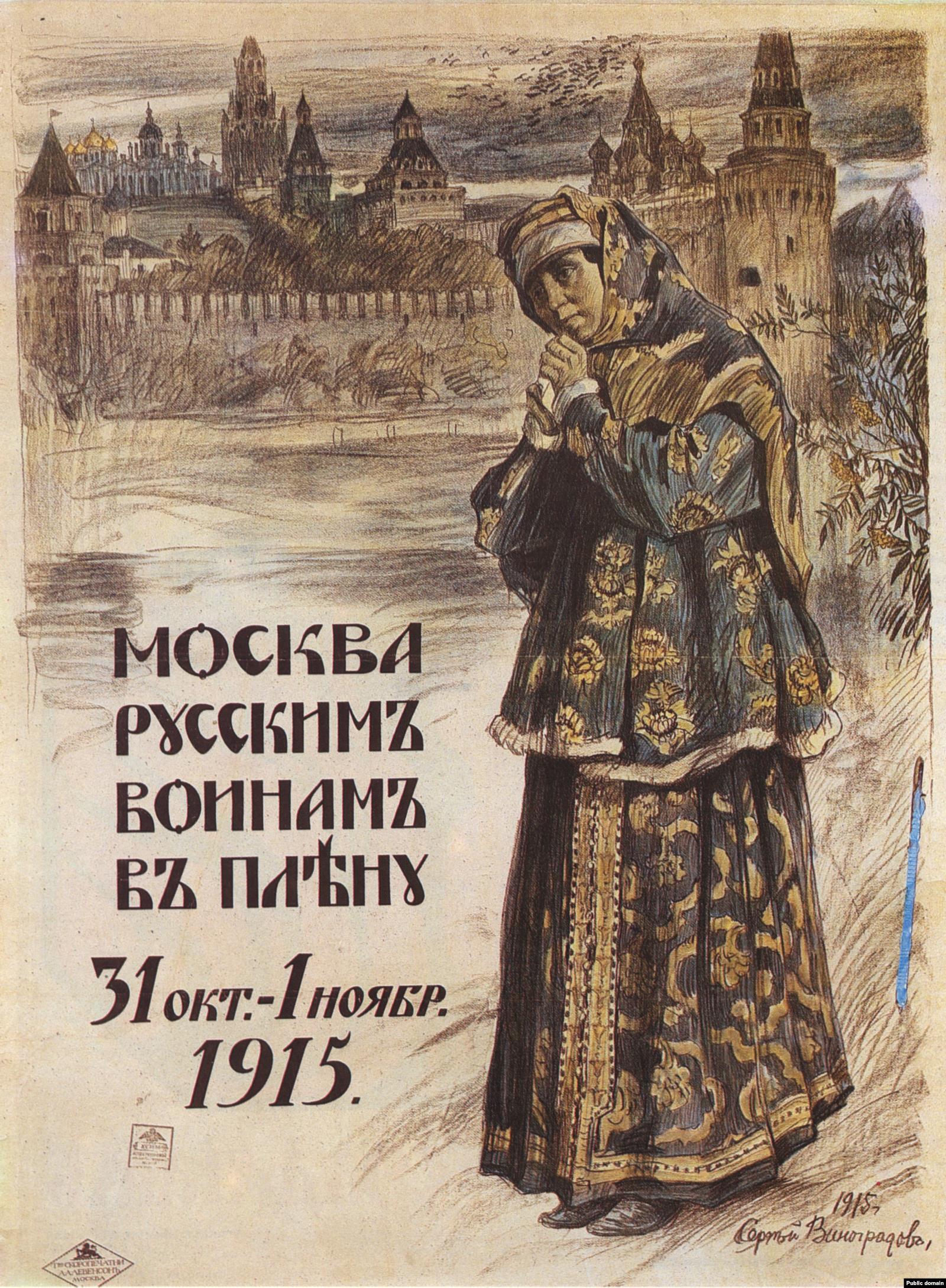After reading Durnovo’s stunning foresight on the eve of World War I, I wanted to understand how the war was being conveyed to imperial subjects. After all, Durnovo believed that the war was hopeless. However, imperial subjects still went to war. This led me to wonder how they were imagining the war and its purpose. To understand their imagination, I decided to look at propaganda – unofficial and state-sponsored.

This first image is stunning to me. It is so dramatic yet heroic. A Russian soldier, or knight, is hacking off the heads of the German, Austro-Hungarian and Ottoman empires. The opposing empires are depicted as serpents and their identities are indicated by their hats. The Russian soldier/knight is saving a burning city from the three-headed serpent. Behind him as he sits on his trusty stead shines down the lights – presumably from the heavens. This piece of propaganda clearly wanted imperial subjects to imagine the war as an effort to save the world from a grave evil and Imperial Russia as its savior.

This is my second piece of Russian propaganda. I love its spiritualism. A traditionally dressed woman is standing outside the city walls. She is standing in the woods, perhaps to be closer to nature and God, to pray. Given the context, I bet that the woman is praying for Imperial Russia’s troops. She could also be praying for the war effort in general. Nonetheless, her piousness echoes the spiritual identity generations of Russian nationalists (slavophiles, pan-slavists) believed characterized Imperial Russia.
